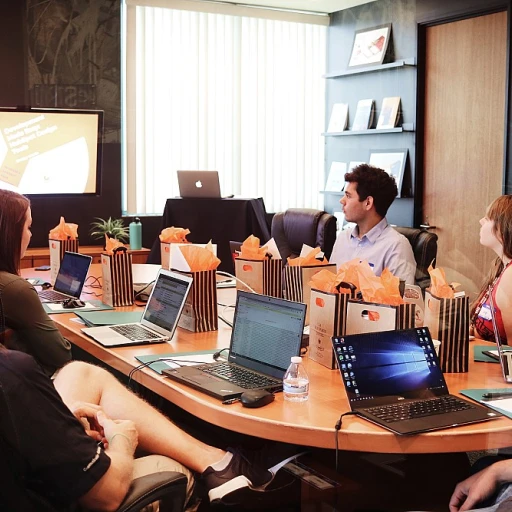
Understanding the Need for Reskilling
Recognizing the Importance of a Skilled Workforce
The necessity for reskilling in today’s fast-paced corporate landscape cannot be overstated. As industries evolve, so too must the skills that employees bring to the table. Organizations need to be agile, and this demands a workforce that is continually learning and adapting. This is where the concept of reskilling becomes crucial. By investing in the development of their employees through effective training videos, companies can ensure that they remain competitive and ready to address the challenges of the future.
In recent years, the integration of technology in the workplace has accelerated the need for innovative methods for assessing learning and upskilling employees. The traditional methods of employee training have had to pivot to more engaging and flexible formats. Video training, in particular, offers a dynamic solution, allowing for both visual and auditory learning that can make complex topics more accessible.
Furthermore, with the digital transformation sweeping across virtually all sectors, companies that prioritize reskilling their workforce through high-quality video content are better positioned to thrive. This approach not only taps into diverse learning preferences but also scales well across different team sizes and locations.
As organizations seek to integrate training videos into their employee training programs, understanding the nuances of video production is key. The role of live action and animation in creating engaging corporate training content can significantly enhance the learning experience. However, it involves a comprehensive planning process — from conceptualizing the educational video to post production and video editing by adept production companies.
Ultimately, investing in the right video training strategy benefits both the company and its employees, fostering a culture of continuous improvement and adaptability. In the subsequent sections, the role of these elements in crafting effective corporate training videos will be explored in more detail, offering insights into design principles and overcoming production challenges.
The Role of Corporate Training Videos
The Impact of Corporate Training Videos in Skill Development
Corporate training videos play a crucial role in the employee training landscape. They serve as an efficient method to disseminate knowledge across a large workforce, ensuring a standardized learning experience for everyone involved. These videos can encompass various forms, from live action to animated video content, all aimed at fostering employee engagement and enhancing skill sets. Training videos are crafted with the intention of simplifying complex concepts, turning them into easily digestible segments. This is where explainer videos truly shine. By breaking down information into clear, concise points, they help employees grasp new skills quickly and effectively. The production process often involves close cooperation between corporate teams and production companies to ensure the best outcomes. The incorporation of animation in educational video content adds an engaging layer, capturing the viewer’s attention and making the learning process more enjoyable. From an explainer video to intricate narration pieces, the animation can convey company-specific processes or demonstrations that live action might not capture efficiently. Furthermore, the integration of high quality graphics and sound in training videos ensures the message is delivered impactfully, aiding retention and comprehension. As employee training programs continue to rely on these tools, the aim is for them to evolve into interactive, immersive learning experiences. With evolving technology, video production for corporate training is anticipated to continue growing. Keeping abreast of effective competency-based training methods can provide additional insights into maximizing the potential of these resources in employee development. This focus on instructional design and video training underscores the importance of continuous improvement in learning tools offered to employees.Designing Effective Training Videos
Crafting Informative and Engaging Training Videos
Designing effective training videos plays a critical role in corporate training, especially in today's fast-paced digital landscape. An effective training video not only captures the attention of employees but also ensures that the learning content is comprehensible and easily retained. To create impactful training videos, companies must focus on several pivotal factors:- Clear Objectives: Before diving into the production process, it's crucial to outline clear learning objectives. This helps focus the video content and makes certain that it aligns with company goals and employee training needs.
- Engaging Content: Utilize a mix of learning methods such as live action and animated videos to keep the content engaging. The inclusion of explainer videos and animation can simplify complex topics and make them more relatable to employees.
- Quality Production: High-quality video production can make a significant difference. Creative production companies can help design videos with excellent video editing and post production that enhances the learning experience.
- Tailoring to Audience: Videos should be tailored to fit the specific needs and preferences of the employee audience. This involves considering team size, the nature of the training, and the employees' existing skill levels.
- Collaborative Efforts: Involving a diverse project team in the video training process ensures that varying perspectives and expertise are incorporated. This collaboration can range from leveraging insights from Pigeon Studio in video production to utilizing feedback from employees.
Challenges in Video Production for Training
Overcoming Obstacles in Video Development for Employee Instruction
Creating high-quality training videos for corporate learning initiatives involves a number of complex steps. Successfully navigating these steps ensures that the resulting content is engaging and beneficial for employees. The primary challenge is integrating diverse elements such as live action, animation, and post-production processes into cohesive, effective training videos. Finding the right balance between these elements can elevate the learning experience and better convey corporate objectives. However, coordinating all these components requires a well-organized production process. Here are some key challenges encountered during the video production process:- Resource Allocation: Determining the appropriate team size and securing necessary resources can be difficult. Production companies often weigh these factors by considering the scope and complexity of the project. Larger teams might be necessary for projects incorporating elaborate animation or live action scenes.
- Content Consistency: Ensuring that the video content aligns with the corporate learning goals and resonates with the target audience is crucial. Keeping content clear and cohesive throughout the development process guarantees that the message is not lost.
- Technical Constraints: Employing the best video editing tools and techniques is essential, but production companies sometimes face limitations related to software, hardware, or expertise. Navigating these constraints while maintaining high quality requires strategic planning and collaboration.
- Time Management: The time invested in video development is significant. Companies must streamline their processes to avoid long production times that can delay employee training initiation. Fostering efficient workflows is important to maintain project momentum.
- Adaptability to Changing Content Needs: Corporate environments are dynamic. Videos may need updates to stay relevant or to include the latest information. Production teams often face the challenge of modifying content efficiently without starting from scratch.













